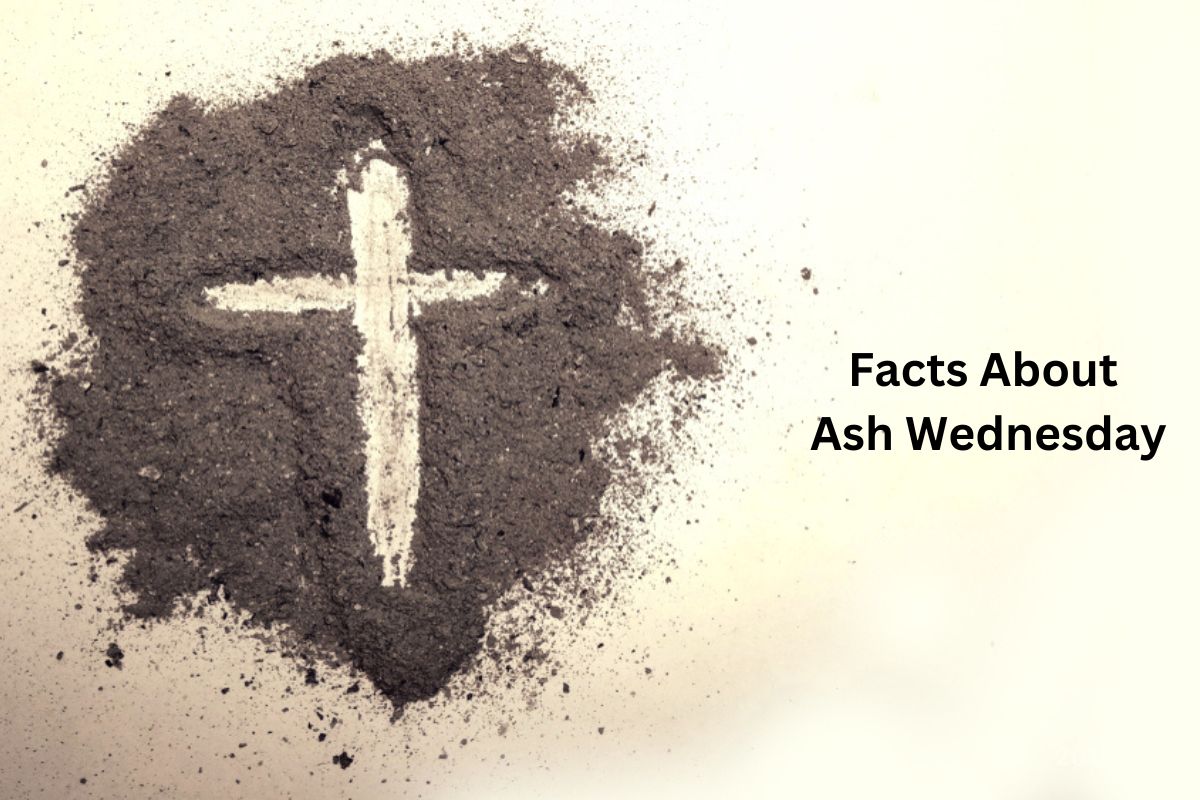Ash Wednesday is a significant day in the Christian calendar, marking the beginning of the Lenten season.
On this day, Christians worldwide participate in rituals that symbolize repentance, mortality, and spiritual preparation for Easter.
This article explores some key facts about Ash Wednesday, shedding light on its religious significance and the customs associated with it.
Ash Wednesday Facts
1. Marks the start of Lent
Ash Wednesday is the pivotal day that marks the beginning of the Christian season of Lent. Lent is a period of 40 days (not counting Sundays) that leads up to Easter Sunday.
Also Read: Facts About Confirmation
It is a time of spiritual preparation and reflection, mirroring the 40 days Jesus spent fasting in the desert before beginning his public ministry.

2. Falls 46 days before Easter
Ash Wednesday’s date varies each year, as it is calculated based on the date of Easter Sunday. It typically falls 46 days before Easter, but this can change due to the way Easter’s date is determined, which is based on the lunar calendar. As a result, Ash Wednesday can occur in either February or March.
3. Ashes are placed on foreheads in the shape of a cross
One of the most distinctive and symbolic aspects of Ash Wednesday is the ritual of receiving ashes on one’s forehead. The ashes are typically made by burning the palm branches that were blessed and distributed on Palm Sunday of the previous year.
Also Read: Baptism Facts
During a special Ash Wednesday service, a priest or minister marks the foreheads of believers with these ashes in the shape of a cross.
While doing so, they may say one of two phrases: “Remember that you are dust, and to dust you shall return” or “Repent and believe in the Gospel.” This act symbolizes several key aspects:
- Repentance: It serves as a visible reminder of the need for repentance and turning away from sin.
- Mortality: It reminds believers of their own mortality and the temporary nature of human life on Earth.
- Humility: It emphasizes humility and the call to follow Christ’s example.
These three aspects collectively make the imposition of ashes a powerful and meaningful tradition for Christians on Ash Wednesday, as it encourages reflection on one’s faith, life, and relationship with God as they embark on the Lenten journey.
4. Symbolizes repentance and mortality
Ash Wednesday is deeply symbolic in Christian theology. The use of ashes symbolizes both repentance and mortality:
- Repentance: The ashes remind Christians of the need for repentance and penance. They encourage believers to turn away from sin and seek forgiveness from God. It’s a solemn reminder of the call to live a life of virtue and obedience to God’s commandments.
- Mortality: The phrase “Remember that you are dust, and to dust, you shall return” underscores the transient nature of human life. It serves as a powerful reminder that everyone will eventually face death and judgment, emphasizing the importance of living a faithful and righteous life.

5. Involves fasting and abstinence
Ash Wednesday is the beginning of a period of fasting and abstinence that lasts throughout the Lenten season, except on Sundays. Traditionally, Christians undertake the following practices:
- Fasting: Many Christians choose to fast on Ash Wednesday, typically by eating only one full meal and two smaller meals that do not equal a full meal. Fasting is seen as a way to spiritually prepare for Easter and to draw closer to God through self-denial and discipline.
- Abstinence: Believers often abstain from eating meat on Ash Wednesday and on all Fridays during Lent as an act of penance. Instead, they may consume fish or vegetarian meals.
6. Lent lasts for 46 days, excluding Sundays
While Lent is often associated with a 40-day period, it actually spans 46 days. The reason for this is that Sundays are not counted as part of the Lenten fast. Sundays are considered “mini-Easters” and are days of celebration, not fasting.
This distinction allows for a balance between penitential practices and the joy of the resurrection of Christ, which is celebrated on Easter Sunday.
The 40 days of fasting represent the 40 days Jesus spent fasting in the desert, while the six Sundays symbolize the resurrection and victory over sin and death.
7. Liturgical color is purple or violet
Purple or violet is the liturgical color associated with Ash Wednesday and the entire season of Lent. This color symbolizes penance, preparation, and mourning.
It serves as a visual reminder of the solemnity and seriousness of the season and the need for personal reflection and repentance.

8. Observed by various Christian denominations
Ash Wednesday is not exclusive to one particular Christian denomination but is observed by many. While the customs and rituals may vary, it is a significant day in the liturgical calendar for several Christian groups, including:
- Roman Catholic Church: Ash Wednesday is observed with Mass, the imposition of ashes, and the call to fasting and abstinence.
- Anglican/Episcopal Church: Similar to Catholic practices, Anglicans and Episcopalians mark the day with the imposition of ashes and special liturgical services.
- Lutheran Church: Lutherans also observe Ash Wednesday with the imposition of ashes, confession, and a focus on repentance.
- Methodist Church: Methodists celebrate Ash Wednesday with a service of worship that includes ashes and emphasizes penance and humility.
- Other Protestant Denominations: Various Protestant denominations, such as Presbyterian, Baptist, and United Church of Christ, may observe Ash Wednesday with services and practices influenced by their traditions.
9. Ashes are considered a sacramental in Catholicism
In Catholicism, ashes used on Ash Wednesday are considered a sacramental, which is a sacred sign or action that signifies a deeper spiritual reality.
The ashes are blessed by a priest during a special Ash Wednesday Mass. Catholics receive the ashes as a sign of their repentance and mortality, reminding them of their need for God’s mercy and grace.
10. Special worship services focus on repentance and preparation
On Ash Wednesday, many churches hold special worship services that emphasize several key themes:
- Repentance: The primary theme of the day is repentance, turning away from sin, and seeking forgiveness from God. This is reflected in prayers, scripture readings, and sermons.
- Preparation: Ash Wednesday marks the beginning of the Lenten season, and the services are designed to help believers prepare their hearts and minds for Easter. This includes reflection on Christ’s sacrifice and resurrection.
- Imposition of Ashes: The central ritual involves the imposition of ashes on the foreheads of worshippers, accompanied by a call to repentance and a reminder of human mortality.
- Fasting and Abstinence: The importance of fasting and abstinence during Lent is often stressed, with guidance on how to observe these practices faithfully.
These worship services are an essential part of Ash Wednesday, as they provide a communal context for believers to begin their Lenten journey, focusing on spiritual growth, renewal, and drawing closer to God.
